
Campo de' Fiori: Rome's Vibrant Heartbeat
Discover Campo de' Fiori: A vibrant Roman square offering a dynamic blend of bustling markets, historic landmarks, and lively nightlife.
Campo de' Fiori, located in the heart of Rome, is a bustling open-air market by day and a lively social hub by night. This historic square, whose name translates to 'Field of Flowers,' has been a significant part of Roman life since the 15th century. During the day, the square is filled with stalls selling fresh produce, flowers, spices, and local delicacies, offering a sensory feast for visitors. The vibrant colors and enticing aromas make it an unmissable experience for any traveler seeking an authentic taste of Roman culture. As the sun sets, Campo de' Fiori transforms into a lively nightlife destination, with numerous bars, restaurants, and cafes coming to life. The square becomes a gathering spot for both locals and tourists who want to enjoy a leisurely evening in a historic setting. The atmosphere is electric, with street performers and musicians adding to the charm. It's the perfect place to unwind after a day of exploring the Eternal City. Bordering the square, you'll find a variety of historical landmarks and architectural marvels, including the statue of philosopher Giordano Bruno, who was executed here in 1600. The surrounding streets are a maze of charming alleys and hidden gems, offering plenty of opportunities for exploration. Whether you're here for the market, the history, or the nightlife, Campo de' Fiori promises an unforgettable Roman experience.
Local tips in Campo de' Fiori
- Visit early in the morning to experience the market at its bustling best and to capture great photos without the crowds.
- Try local delicacies like porchetta sandwiches and freshly made pasta from the market stalls.
- In the evening, head to one of the rooftop bars nearby for stunning views of Rome's skyline.
- Bring cash, as some market vendors may not accept credit cards.
- Take a moment to explore the surrounding streets and discover hidden cafes and artisan shops.
Campo de' Fiori: Rome's Vibrant Heartbeat
Campo de' Fiori, located in the heart of Rome, is a bustling open-air market by day and a lively social hub by night. This historic square, whose name translates to 'Field of Flowers,' has been a significant part of Roman life since the 15th century. During the day, the square is filled with stalls selling fresh produce, flowers, spices, and local delicacies, offering a sensory feast for visitors. The vibrant colors and enticing aromas make it an unmissable experience for any traveler seeking an authentic taste of Roman culture. As the sun sets, Campo de' Fiori transforms into a lively nightlife destination, with numerous bars, restaurants, and cafes coming to life. The square becomes a gathering spot for both locals and tourists who want to enjoy a leisurely evening in a historic setting. The atmosphere is electric, with street performers and musicians adding to the charm. It's the perfect place to unwind after a day of exploring the Eternal City. Bordering the square, you'll find a variety of historical landmarks and architectural marvels, including the statue of philosopher Giordano Bruno, who was executed here in 1600. The surrounding streets are a maze of charming alleys and hidden gems, offering plenty of opportunities for exploration. Whether you're here for the market, the history, or the nightlife, Campo de' Fiori promises an unforgettable Roman experience.
Iconic landmarks you can’t miss
Palazzo Farnese
Explore the grandeur of Palazzo Farnese in Rome, a stunning Renaissance palace filled with history and artistic treasures.

Magia a Campo de' Fiori
Explore Magia a Campo de' Fiori, a vibrant market in the heart of Rome offering fresh produce, artisanal goods, and a taste of local culture.

Monumento a Giordano Bruno
Explore the Monumento a Giordano Bruno in Rome, an inspiring tribute to intellectual freedom and a landmark in the vibrant Campo de' Fiori.
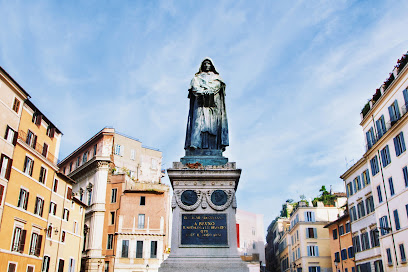
Arco degli Acetari
Explore the Arco degli Acetari, a stunning historical landmark in Rome that captures the essence of ancient architecture and vibrant local life.

Casa de Fiori
Experience the essence of Italian hospitality at Casa de Fiori, a charming bed and breakfast in the heart of Rome, steps away from iconic attractions.
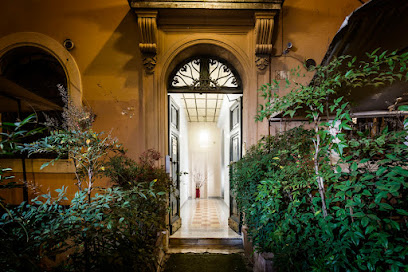
Fontana di Campo de' Fiori
Discover the allure of Fontana di Campo de' Fiori, a historic fountain in the heart of Rome, surrounded by vibrant markets and authentic Italian culture.
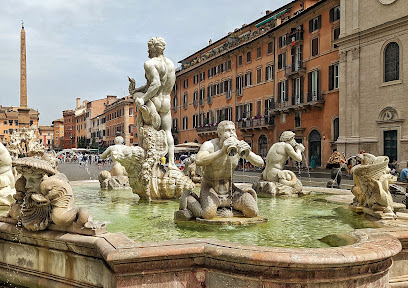
Campo dei Fiori Terrace
Experience the essence of Rome at Campo dei Fiori Terrace, a charming holiday apartment with stunning views and authentic local culture.

Piazza Farnese
Discover the historical charm of Piazza Farnese in Rome, where Renaissance architecture meets vibrant local culture in a picturesque setting.
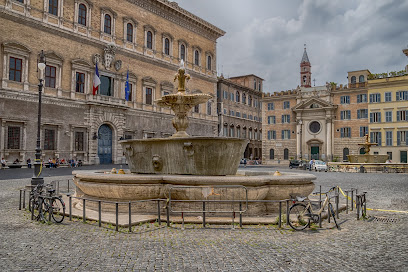
Campo de' Fiori
Discover the heart of Rome at Campo de' Fiori, where vibrant markets and rich culinary experiences await your exploration.

Piazza Campo de' Fiori
Discover the vibrant ambiance of Piazza Campo de' Fiori, a bustling market square in Rome filled with history, culture, and delightful culinary experiences.

Unmissable attractions to see
Trevi Fountain
Experience the magic of the Trevi Fountain, an iconic symbol of Rome's artistic heritage and a must-visit destination for every traveler.
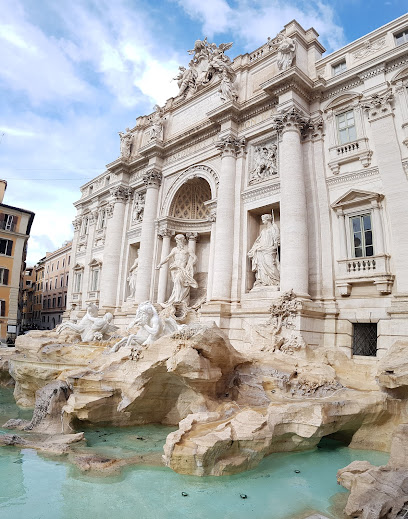
Pantheon
Discover the Pantheon, Rome's architectural masterpiece and a must-visit historical landmark that embodies the grandeur of ancient Rome.
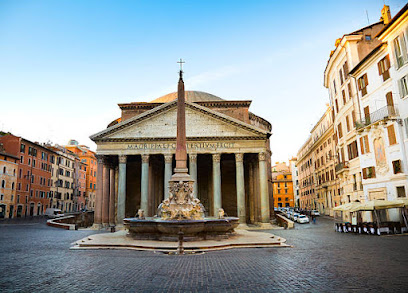
Piazza Navona
Discover the enchanting ambiance of Piazza Navona, Rome's iconic square adorned with stunning fountains and vibrant street life, perfect for every traveler.
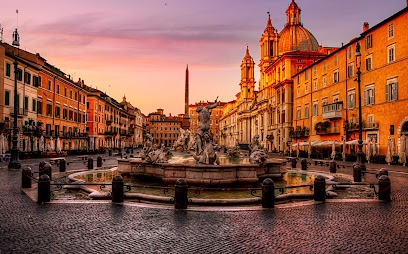
Roman Forum
Discover the heart of ancient Rome at the Roman Forum, an open-air museum filled with historic ruins and captivating stories of the past.
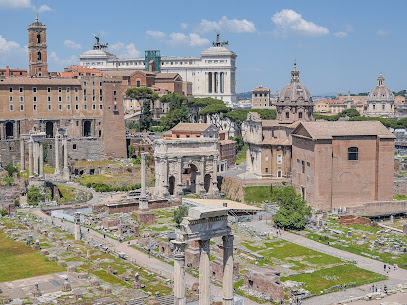
Largo di Torre Argentina
Explore the historic Largo di Torre Argentina, the ancient site of temples and the assassination of Julius Caesar, surrounded by beautiful ruins and friendly cats.
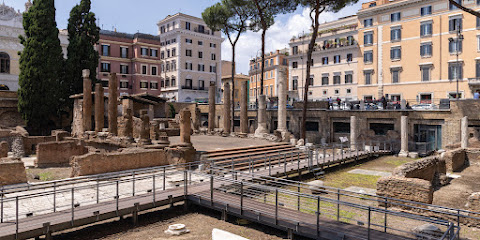
Campidoglio
Explore the historic beauty of Campidoglio, a stunning square in Rome showcasing Renaissance architecture and breathtaking views over the ancient city.
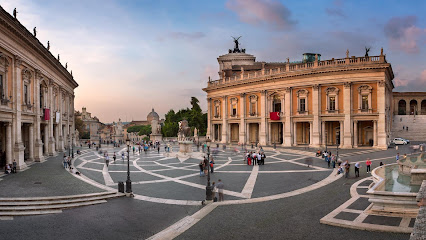
Giardino degli Aranci
Discover the serene beauty of Giardino degli Aranci, a tranquil garden offering breathtaking views and a peaceful escape in the heart of Rome.

Neptune Fountain
Discover the stunning Neptune Fountain in Piazza Navona, a breathtaking example of Baroque artistry and a must-visit attraction in the heart of Rome.

Welcome To Rome
Explore the captivating history and culture of Rome at Welcome To Rome, an immersive tourist attraction and heritage museum offering unforgettable experiences.

Magia a Campo de' Fiori
Immerse yourself in the rich culture and flavors of Rome at Campo de' Fiori, a historic market filled with local produce and artisan goods.

Arco degli Acetari
Explore the Arco degli Acetari, a historical landmark in Rome, where architectural beauty meets rich cultural heritage in a vibrant neighborhood.
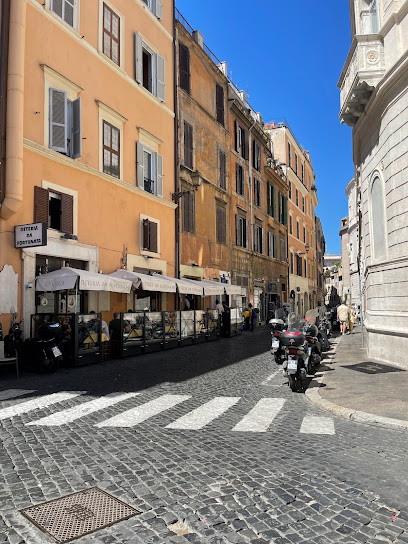
Fontana di Campo de' Fiori
Discover the beauty and history of the Fontana di Campo de' Fiori, a captivating fountain in the heart of Rome's vibrant square.
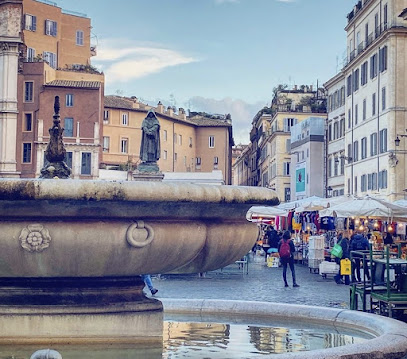
Via dei coronari
Explore the picturesque Via dei Coronari, a historic street in Rome lined with antique shops, delightful cafés, and rich cultural heritage.
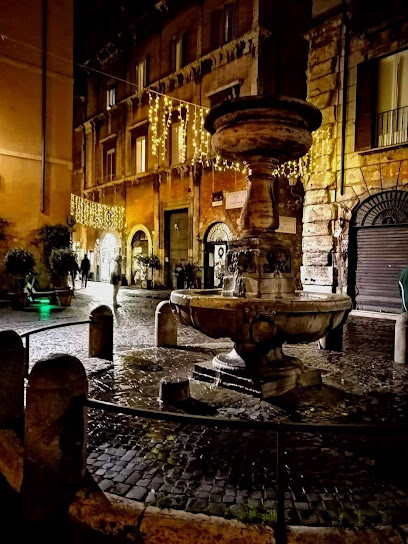
Essential places to dine
Ai Balestrari Campo de Fiori
Experience authentic Roman cuisine at Ai Balestrari Campo de Fiori – where every dish tells a story steeped in tradition.
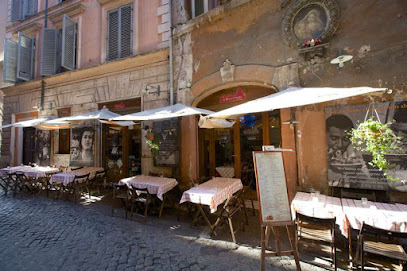
Mercato Hostaria Roma
Experience authentic Italian flavors at Mercato Hostaria Roma, where tradition meets modern culinary excellence in the heart of Rome.
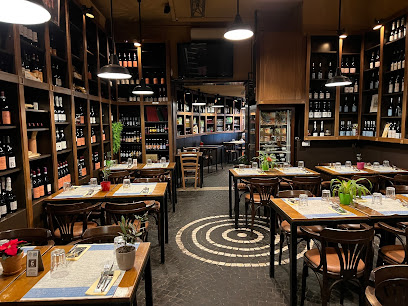
Il Baccanale
Discover Il Baccanale: A perfect blend of traditional Italian cuisine and modern gastropub vibes in Rome's lively Campo de' Fiori.

Antica Hostaria Romanesca
Experience authentic Italian flavors at Antica Hostaria Romanesca in Rome's historic Campo de' Fiori.
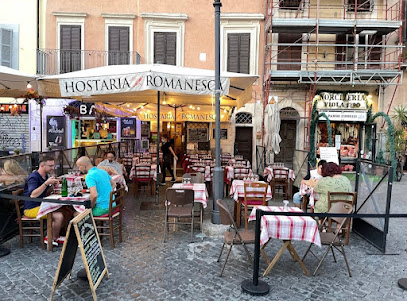
Ristorante Campo de’ Fiori
Experience authentic Italian cuisine at Ristorante Campo de’ Fiori in Rome – from exquisite seafood dishes to delightful pizzas.

Virgilio a Campo De’ Fiori
Experience authentic Italian flavors at Virgilio a Campo De’ Fiori - your culinary haven in Rome's bustling heart.

Sloppy Sam's Roma
Experience authentic Roman cuisine at Sloppy Sam's Roma, located near Campo de' Fiori - where flavor meets tradition.

Ristorante Da Barbara
Experience authentic Italian flavors at Ristorante Da Barbara in Rome's enchanting Campo de' Fiori district.
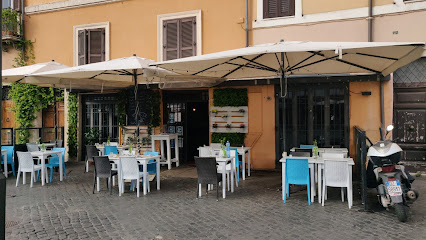
Numbs - Campo De Fiori
Experience authentic Italian flavors at Numbs in Campo De Fiori, where tradition meets taste in the heart of Rome.

Salumeria del Campo
Discover the authentic flavors of Italy at Salumeria del Campo in Rome's vibrant Campo de' Fiori.
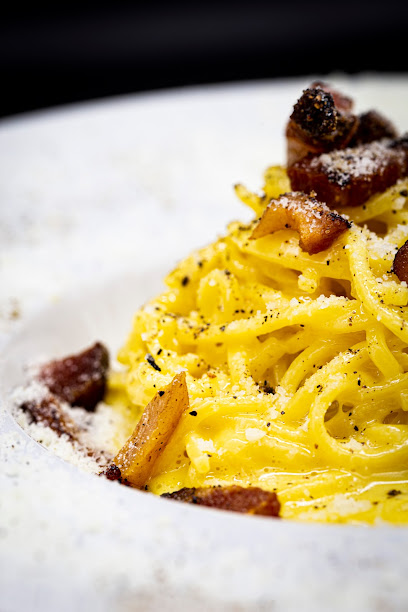
Markets, malls and hidden boutiques
Norcineria Viola
Indulge in Rome's authentic flavors at Norcineria Viola, your go-to spot for artisanal cold cuts and Italian grocery delights.
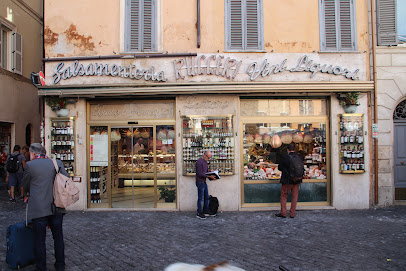
Ancient Pizzicheria Ruggeri
Explore the authentic flavors of Italy at Ancient Pizzicheria Ruggeri in Campo de' Fiori, a must-visit grocery store for tourists seeking gourmet delights.

Manufactus Made In Italy
Explore unique handcrafted gifts at Manufactus Made In Italy, a premier destination in Rome's historic Piazza Navona.
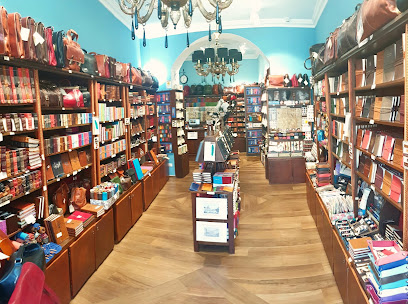
Groove Rome Berlin
Discover unique fashion at Groove Rome Berlin, a boutique in the heart of Rome offering exquisite dresses with a stylish flair.
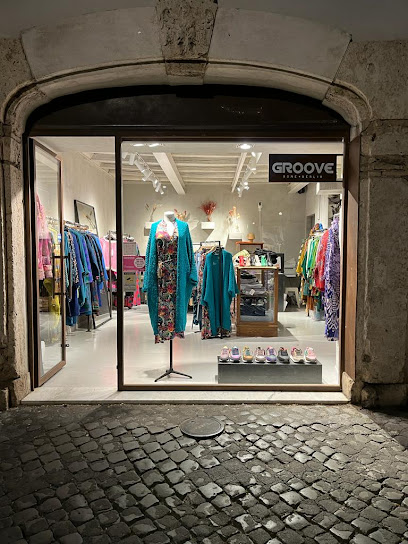
Nabiz di Natalia Bizzi
Discover unique gifts and stylish clothing at Nabiz di Natalia Bizzi, a charming shop in the heart of Rome, celebrating Italian craftsmanship.

Murano Store
Explore the exquisite Murano glass treasures at Murano Store, a souvenir haven in Rome that captures the essence of Italian artistry.
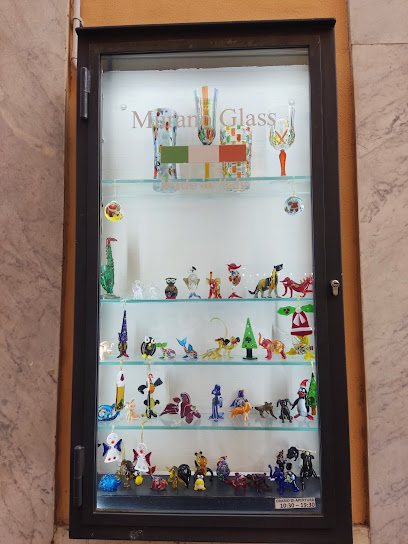
Sapataria
Explore Sapataria in Rome for unique, handcrafted gifts that reflect the rich culture and artistry of Italy.
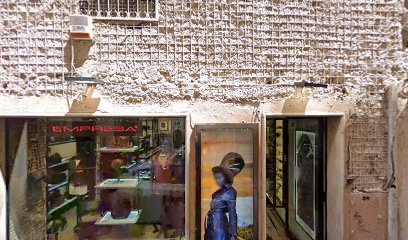
souvenir
Explore a delightful gift shop in Rome, offering unique souvenirs and handcrafted treasures that capture the essence of your Italian adventure.

Beija Flor
Explore the elegance of Italian fashion at Beija Flor, a charming women's clothing boutique in Rome, where unique styles meet quality craftsmanship.

Mercado
Explore Mercado in Rome for a vibrant shopping experience filled with local flavors, artisanal goods, and the true essence of Italian culture.
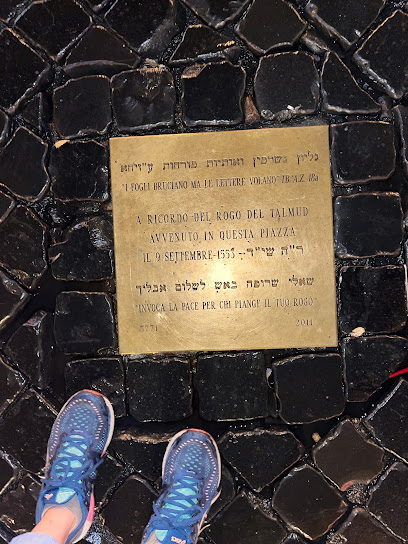
Essential bars & hidden hideouts
Il Baccanale
Experience authentic Italian cuisine at Il Baccanale, a premier gastropub in the heart of Rome's historic Campo de' Fiori.
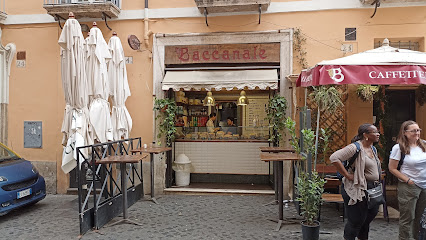
The Drunken Ship
Experience vibrant nightlife and delicious American cuisine at The Drunken Ship, Rome's must-visit pub in the heart of Campo de' Fiori.

Taba Café Campo de' Fiori
Discover the culinary charm of Taba Café Campo de' Fiori, a bistro and cocktail bar nestled in Rome's vibrant market square.
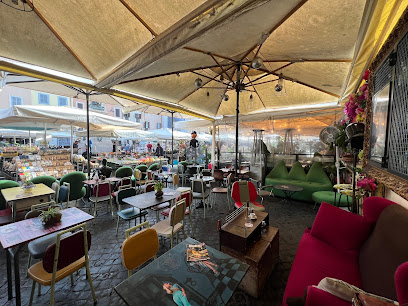
Roma Beer Company
Discover the vibrant atmosphere and unique flavors of Rome at Roma Beer Company, your go-to gastropub for craft beers and Roman cuisine.

Argot - Mixology bar - Roma centro - musica live
Experience the vibrant nightlife of Rome at Argot Mixology Bar, where crafted cocktails and live music create an unforgettable atmosphere.
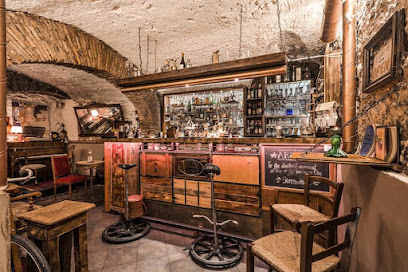
Giganti
Experience authentic Italian dining at Giganti Bistro, a beloved culinary spot in the lively Campo de' Fiori of Rome.
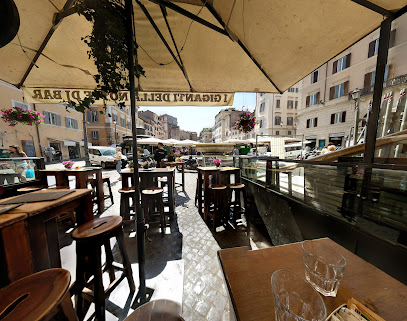
Eretico bistrot
Experience the vibrant nightlife of Rome at Eretico Bistrot, where creative cocktails and a lively atmosphere come together in the heart of Campo de' Fiori.

Numbs - Campo De Fiori
Discover authentic Italian flavors at Numbs in Campo De Fiori, where tradition meets the vibrant spirit of Rome.

Bar de' Fiori
Experience the vibrant atmosphere and delicious offerings at Bar de' Fiori, a charming bar in the heart of Rome's Campo de' Fiori.
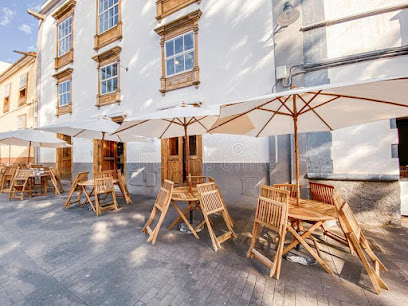
AMERIAN BAR
Discover AMERIAN BAR in Campo de' Fiori, where vibrant atmosphere meets exquisite drinks in the heart of Rome.
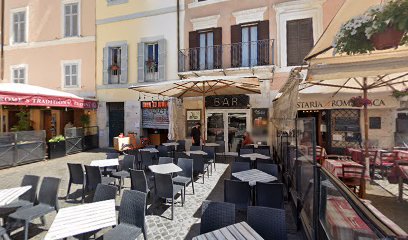
Local Phrases
-
- HelloCiao
[chow] - GoodbyeArrivederci
[ahr-ree-veh-dehr-chee] - YesSì
[see] - NoNo
[noh] - Please/You're welcomePer favore/Prego
[pehr fah-voh-reh/preh-goh] - Thank youGrazie
[grah-tsyeh] - Excuse me/SorryScusi/Mi dispiace
[skoo-zee/mee dee-spyah-cheh] - How are you?Come stai?
[koh-meh stah-ee] - Fine. And you?Bene. E tu?
[beh-neh. eh too] - Do you speak English?Parli inglese?
[pahr-lee een-gleh-zeh] - I don't understandNon capisco
[nohn kah-pee-skoh]
- HelloCiao
-
- I'd like to see the menu, pleaseVorrei vedere il menù, per favore
[vohr-reh veh-deh-reh eel meh-noo, pehr fah-voh-reh] - I don't eat meatNon mangio carne
[nohn mahn-joh kahr-neh] - Cheers!Salute!
[sah-loo-teh] - I would like to pay, pleaseVorrei pagare, per favore
[vohr-reh pah-gah-reh, pehr fah-voh-reh]
- I'd like to see the menu, pleaseVorrei vedere il menù, per favore
-
- Help!Aiuto!
[ah-yoo-toh] - Go away!Vai via!
[vah-ee vee-ah] - Call the Police!Chiamate la polizia!
[kyah-mah-teh lah poh-lee-tsyah] - Call a doctor!Chiamate un dottore!
[kyah-mah-teh oon doht-toh-reh] - I'm lostMi sono perso
[mee soh-noh pehr-soh] - I'm illSto male
[stoh mah-leh]
- Help!Aiuto!
-
- I'd like to buy...Vorrei comprare...
[vohr-reh kohm-prah-reh] - I'm just lookingSto solo guardando
[stoh soh-loh gwar-dahn-doh] - How much is it?Quanto costa?
[kwahn-toh koh-stah] - That's too expensiveÈ troppo caro
[eh troh-poh kah-roh] - Can you lower the price?Puoi abbassare il prezzo?
[pwah-ee ahb-bahs-sah-reh eel preh-tsoh]
- I'd like to buy...Vorrei comprare...
-
- What time is it?Che ora è?
[keh oh-rah eh] - It's one o'clockÈ l'una
[eh loo-nah] - Half past (10)Sono le dieci e mezza
[soh-noh leh dyeh-chee eh meh-tsah] - MorningMattina
[maht-tee-nah] - AfternoonPomeriggio
[poh-meh-ree-joh] - EveningSera
[seh-rah] - YesterdayIeri
[yeh-ree] - TodayOggi
[oh-jee] - TomorrowDomani
[doh-mah-nee] - 1Uno
[oo-noh] - 2Due
[doo-eh] - 3Tre
[treh] - 4Quattro
[kwah-troh] - 5Cinque
[cheen-kweh] - 6Sei
[say] - 7Sette
[seht-teh] - 8Otto
[oh-toh] - 9Nove
[noh-veh] - 10Dieci
[dyeh-chee]
- What time is it?Che ora è?
-
- Where's a/the...?Dov'è un/il...?
[doh-veh oon/eel] - What's the address?Qual è l'indirizzo?
[kwahl eh leen-dee-ree-tsoh] - Can you show me (on the map)?Puoi mostrarmi (sulla mappa)?
[pwah-ee mohs-trahr-mee (sool-lah mahp-pah)] - When's the next (bus)?Quando passa il prossimo (autobus)?
[kwahn-doh pahs-sah eel prohs-see-moh (ow-toh-boos)] - A ticket (to ....)Un biglietto (per ....)
[oon beel-lyet-toh (pehr)]
- Where's a/the...?Dov'è un/il...?
History of Campo de' Fiori
-
Campo de' Fiori, which translates to 'Field of Flowers', was originally a meadow in the Middle Ages before evolving into a bustling market square in the 15th century. Its transformation reflects the growth of Rome as a center of trade and community life, where local farmers, merchants, and artisans gathered to sell their goods, establishing a vibrant atmosphere that persists today.
-
One of the most significant historical events linked to Campo de' Fiori is the execution of philosopher and theologian Giordano Bruno in 1600. He was accused of heresy for his views on cosmology and the existence of multiple worlds. His martyrdom turned Campo de' Fiori into a symbol of freedom of thought and expression, as a statue commemorating Bruno was erected in the square in 1889, serving as a reminder of the struggle against oppression.
-
During the Renaissance period, Campo de' Fiori became a cultural hub, attracting artists, writers, and thinkers. The square was frequented by notable figures such as Caravaggio and the poet Pietro Aretino, who contributed to the artistic and literary richness of Rome. The lively market atmosphere fostered creativity and exchange, reflecting the dynamic cultural landscape of the time.
-
Campo de' Fiori has long been a focal point for Roman festivals and traditions. From the 18th century onwards, it hosted various celebrations, including Carnival festivities, which allowed locals to express their cultural identity through music, dance, and elaborate costumes. The square's role in these communal gatherings highlights the importance of social interaction in Roman culture.
-
Today, Campo de' Fiori maintains its status as a vibrant marketplace, renowned for its fresh produce, spices, and local delicacies. The market attracts both locals and tourists, contributing to Rome's culinary culture. The surrounding area is dotted with restaurants, cafes, and shops, showcasing the evolution of the square from its historical roots to a modern gastronomic destination.
Campo de' Fiori Essentials
-
Campo de' Fiori is centrally located in Rome, making it easily accessible from various neighborhoods. From Termini Station, you can take bus numbers 64 or 40, both of which stop nearby. Alternatively, if you're coming from Vatican City, it's a 20-minute walk or a short ride on bus number 23. For a scenic route, consider walking from Piazza Navona, which takes about 10 minutes.
-
Campo de' Fiori is a pedestrian-friendly area, making walking the best way to explore. The nearest metro station is Barberini (Line A), about a 20-minute walk away. Buses frequently run through the area, and you can use bike-sharing services like Jump or Lime for a quick ride. Taxis are also available, but traffic can be heavy during peak hours.
-
Campo de' Fiori is generally safe for tourists, but standard precautions should be taken. Avoid poorly lit areas at night and keep an eye on belongings, especially in crowded spots. Some areas around Termini Station and the outskirts of Trastevere have higher crime rates, so exercise caution there.
-
In case of an emergency, dial 112 for police, fire, or medical assistance. For medical emergencies, the nearest hospital is Ospedale Santo Spirito. It's advisable to have travel insurance that covers health emergencies. Pharmacies are abundant in the area for minor health issues or over-the-counter medications.
-
Fashion: Do wear comfortable shoes for walking. Don't wear overly casual or beachwear. Religion: Do respect the local customs and dress appropriately when visiting churches. Public Transport: Do validate your ticket before boarding. Don't engage in loud conversations or eat on public transport. Greetings: Do greet with a friendly 'Buongiorno' or 'Buonasera.' Eating & Drinking: Do try local specialties at the market. Don't drink alcohol in public spaces outside of cafes and restaurants.
-
To experience Campo de' Fiori like a local, visit the market in the morning when it’s bustling with vendors and locals buying fresh produce. Try to sample the street food, especially the supplì (fried rice balls) from nearby stalls. Engage with local artisans and shopkeepers, who often share insights about the area. Additionally, visiting the square in the evening offers a lively atmosphere with street performers and a vibrant social scene.
Nearby Cities to Campo de' Fiori
-
Things To Do in St. Peter's Square
-
Things To Do in Apostolic Palace
-
Things To Do in Vatican Necropolis
-
Things To Do in Sistine Chapel
-
Things To Do in St. Peter's Basilica
-
Things To Do in Gregorian Etruscan Museum
-
Things To Do in Vatican Museums
-
Things To Do in Vatican Pinacoteca
-
Things To Do in Vatican Gardens
-
Things To Do in Orvieto
-
Things To Do in Assisi
-
Things To Do in Perugia
-
Things To Do in Montepulciano
-
Things To Do in Arezzo
-
Things To Do in Siena








